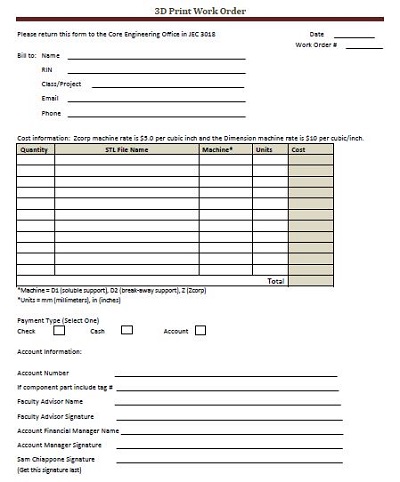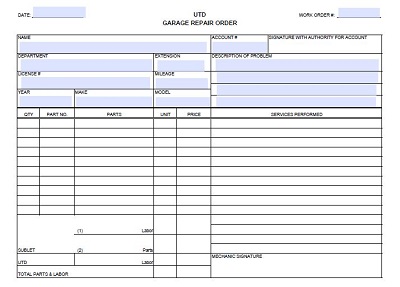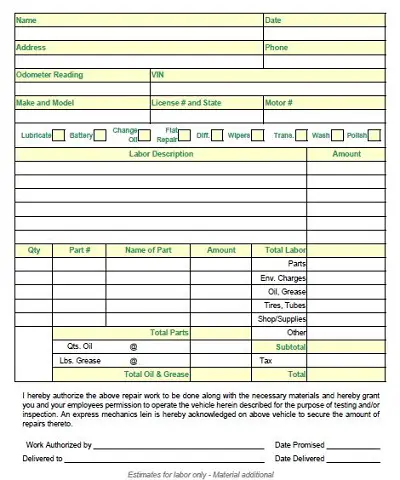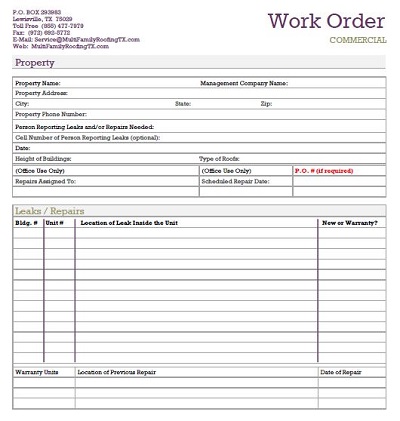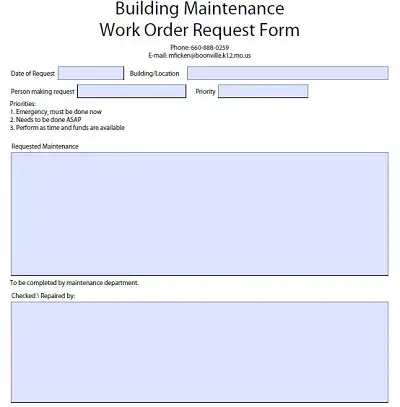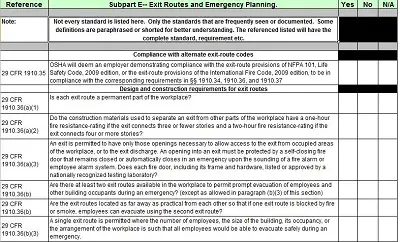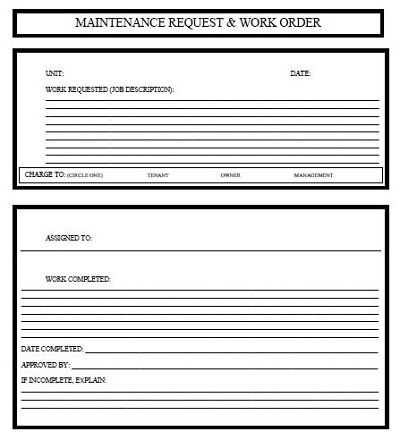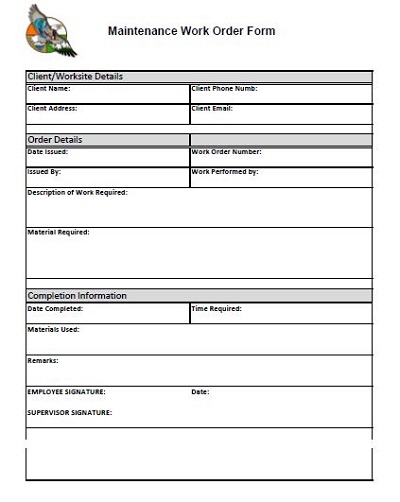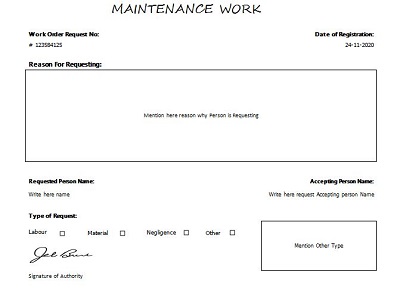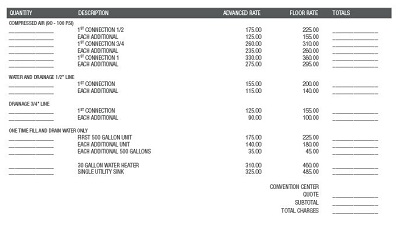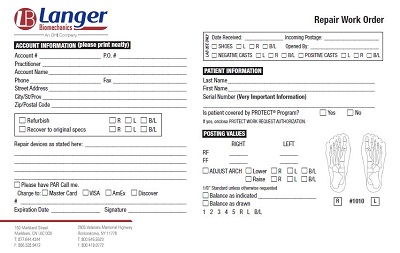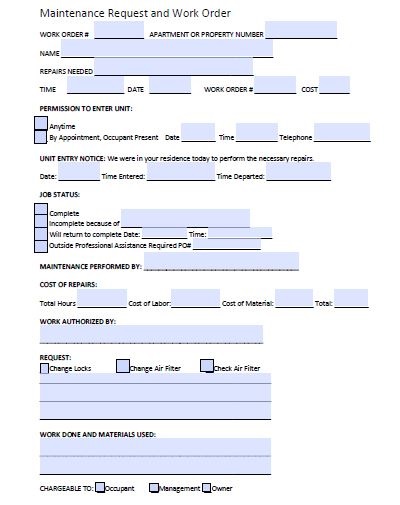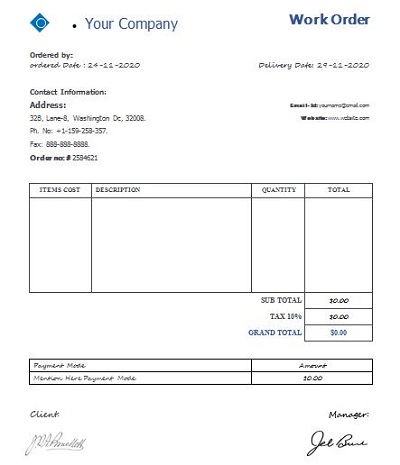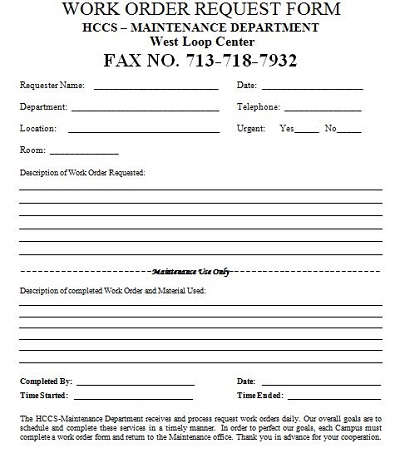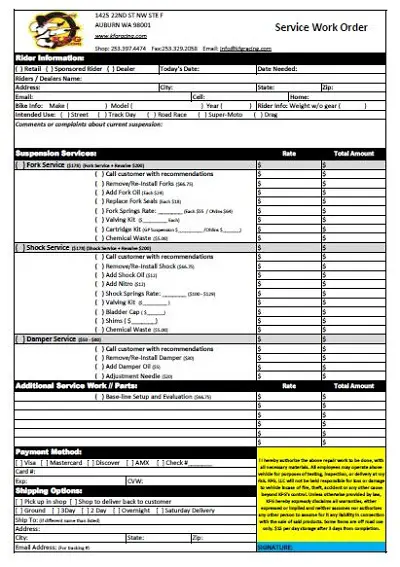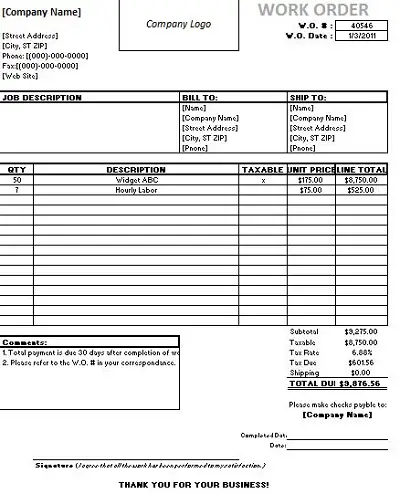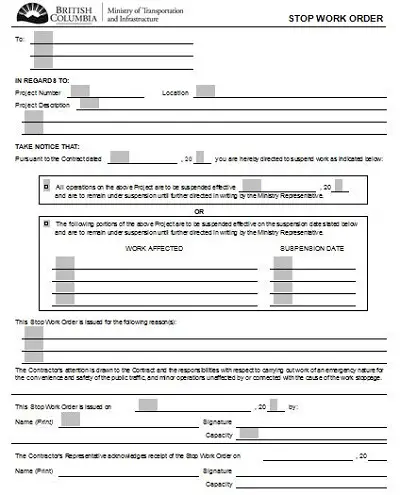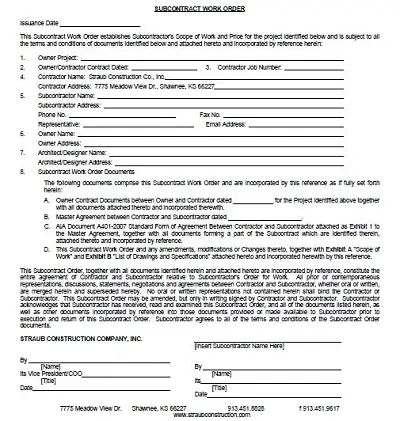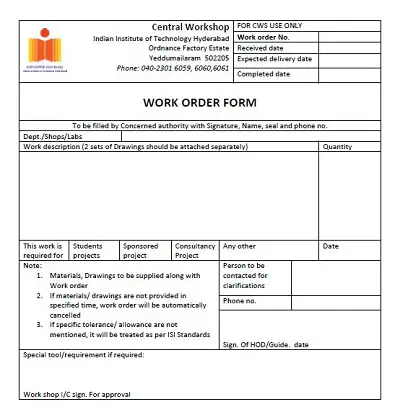25+ Free Work Order Form Templates
A work order form is an invaluable tool that can help streamline operations in any industry. It serves as an organized guide for employees and makes sure that tasks are being completed efficiently and reliably. Each form should be detailed, include all relevant information, and include a clear understanding of the scope of work that needs to be accomplished.
Table of Contents
Moreover, when a work order form is filled out correctly, it becomes a valuable record to refer back to data helping organizations improve processes and make sure that each job is done right the first time. The bottom line a well-constructed work order form can save time, money, and resources.
Download Free Work Order Form Templates
What is a Work Order Form?
A work order form is an essential part of the process in any business that involves exchanging payment for goods or services. This form outlines, in detail, the terms of the agreement between all parties involved and it should be filled out and signed as a way to record these terms. This form makes it easier for both the customer and the vendor to keep track of what was ordered, verify the accuracy, and ensure both parties understand the goals of the exchange. Work order forms are also very helpful in keeping a record in case an issue arises down the road that needs revisiting or resolving.
What Types of Work Order Forms Are There?
If you’ve ever encountered a work order form, then you know how important it is to have one. For those who are unfamiliar with this type of document, it’s a formal request for goods or services and is often used by businesses or organizations to keep track of their operations. But there are different types of work order forms available and each one has its own purpose.
Material Requisition Form: A material requisition form is used when requesting materials from an outside supplier in order to complete a job or project. It includes details about the requested materials, such as quantity, quality, cost, delivery address, and any other relevant information. The form also serves as an official record that can be used for tracking purposes.
Service Request Form: A service request form is similar to a material requisition form but is used when requesting services instead of materials. This could include IT-related services like website design or software development, or more general services like consulting or cleaning services. As with the material requisition form, the service request form should include details about the requested service and any other important information so that it can be tracked and fulfilled efficiently.
Maintenance Request Form: A maintenance request form is used when requesting maintenance on existing equipment or buildings. This could include repairs or replacement parts for machines, HVAC system maintenance, or landscaping services for outdoor spaces. Like the other forms mentioned above, this should include all relevant details about the request so that it can be tracked and completed properly.
What Does a Work Order Form Do?
A work order form is designed to provide structure for customer service processes. It helps companies keep track of customer inquiries, as well as assign tasks to employees and manage their workloads accordingly. When customers submit requests via the work order form they can be sure that their request has been received and that it will be addressed in a timely manner. It also enables companies to easily review what tasks have been assigned to different departments in order to make sure nothing slips through the cracks.
The Advantages of Using a Work Order Form
Using a work order form ensures efficient tracking of customer requests, which is especially beneficial if you are dealing with multiple customers at once. By using this system, businesses can quickly identify high-priority requests and delegate them accordingly without having to manually search through piles of paperwork or emails trying to figure out who requested what and when it was requested. Additionally, by having all customer requests documented in one place, businesses can easily access detailed records on past orders and use this information for future decision-making.
How to Create an Effective Work Order Form
A work order form is essential for any business that needs to manage and track customer requests. It serves as a document that outlines the details of a job, including what needs to be done, who is responsible for it, and when it should be completed. With this information in hand, businesses can easily monitor the progress and completion of their projects. Here’s what you need to know about creating an effective work order form.
Task Description
The first section of your work order form should include a description of the task at hand. This should include all necessary details such as the project scope, timeline, budget, and any other info needed to complete the job. This ensures everyone is on the same page regarding expectations and requirements before getting started. Be sure to include any additional notes or instructions that may come in handy throughout the process.
Responsible Parties
The next step is to identify who will be responsible for completing each task on the work order form. Listing out individual names or departments will help ensure that everyone knows who’s accountable for what parts of the job making it easier to troubleshoot any issues along the way. It also helps keep things organized by giving each team member a clear understanding of what’s expected from them during every stage of a project.
Deadlines
In addition to providing clarity on who is responsible for each task, deadlines are also essential for keeping projects on track and ensuring tasks are completed within an appropriate time frame. To make sure your team meets their goals, list out due dates (or due times) for each task so everyone knows when their portion has to be finished by in order for everything else to progress smoothly. This will help you stay one step ahead by allowing you to anticipate potential delays or roadblocks before they happen, thus avoiding potential problems down the line.
How to Create and Customize a Work Order Form Template
Running a business is no easy feat. One of the most important aspects of running an efficient business is having a standardized workflow. A work order form template can help streamline operations by providing an organized structure for your process. This guide will explain how to create and customize a work order form template for your business needs.
Creating Your Template
The first step in creating a work order form template is deciding which information you need to collect from customers. Standard items include customer information, item descriptions, quantity, pricing, taxes, shipping costs, and payment terms. Once you have decided which information needs to be included in your template, it’s time to start building it out.
Your next step is to choose the right application or software for creating the work order form template. There are many options available that allow you to design your own custom templates with drag-and-drop features or pre-made templates that you can edit as needed. Once you have chosen the right software for your needs, it’s time to begin designing your template. Make sure that each field captures all of the necessary information and references any special instructions or notes that need to be included on the form.
Customizing Your Template
Once you have created the basic version of your work order form template, it’s time to make it unique with customizations. You can add images such as logos or product photos into the document and use color coding for different sections or fields. You can also make sure that all customer data is automatically saved so that it can be referenced easily at any time during the process. Finally, make sure that there are signature fields where customers can sign off on orders before they are processed. This will ensure that all orders are tracked accurately and efficiently from start to finish.

